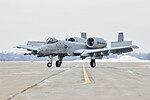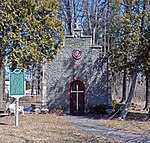Selfridge Air National Guard Base
1917 establishments in MichiganAirfields of the United States Army Air Forces in MichiganAirports in MichiganAll pages needing cleanupBuildings and structures in Macomb County, Michigan ... and 11 more
Civil Air PatrolGeographic coordinate listsHistoric American Engineering Record in MichiganInitial United States Air Force installationsInstallations of Strategic Air CommandInstallations of the United States Air Force in MichiganInstallations of the United States Air National GuardLists of coordinatesMetro DetroitMilitary installations established in 1917Wikipedia pages needing cleanup from October 2011

Selfridge Air National Guard Base or Selfridge ANGB (IATA: MTC, ICAO: KMTC, FAA LID: MTC) is an Air National Guard installation located in Harrison Township, Michigan, near Mount Clemens. Selfridge Field was one of thirty-two Air Service training camps established after the United States entry into World War I in April 1917.
Excerpt from the Wikipedia article Selfridge Air National Guard Base (License: CC BY-SA 3.0, Authors, Images).Selfridge Air National Guard Base
Doolittle Drive,
Geographical coordinates (GPS) Address External links Nearby Places Show on map
Geographical coordinates (GPS)
| Latitude | Longitude |
|---|---|
| N 42.608333333333 ° | E -82.835555555556 ° |
Address
Selfridge Air National Guard Base (Selfridge ANGB)
Doolittle Drive
48045
Michigan, United States
Open on Google Maps





